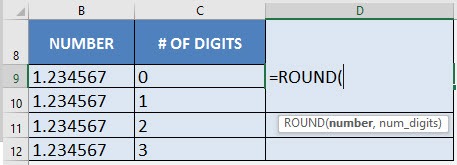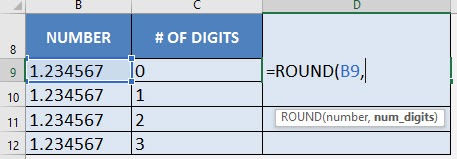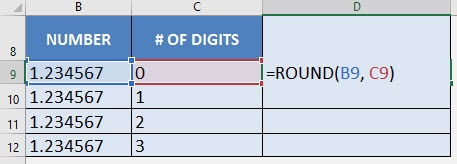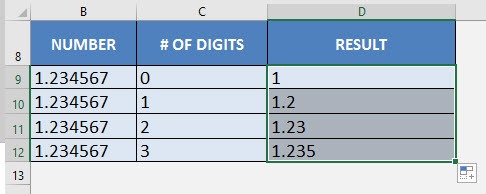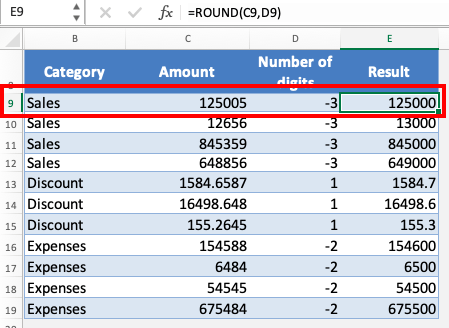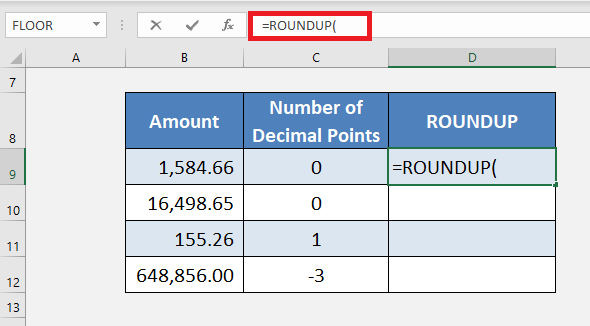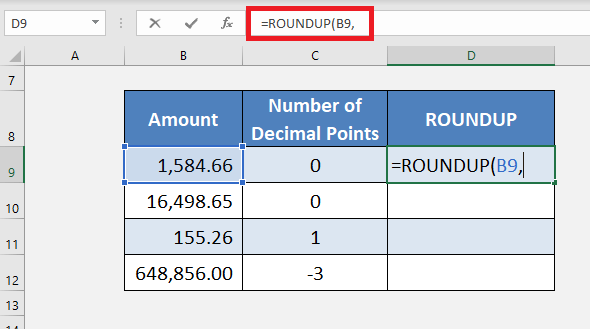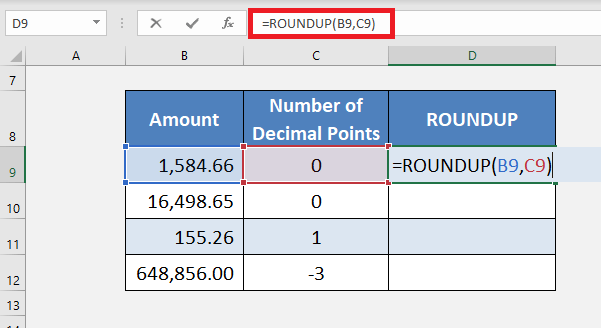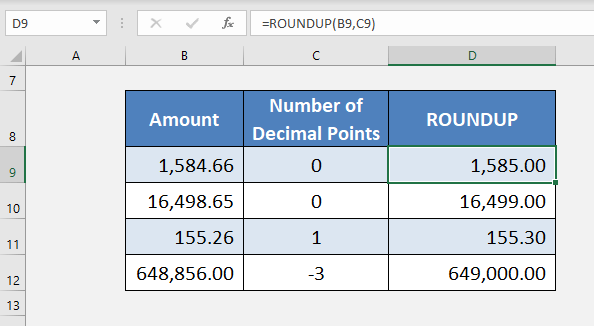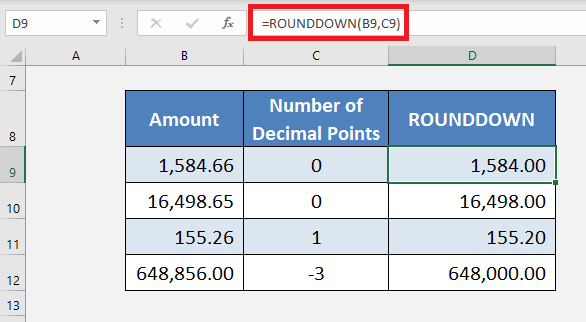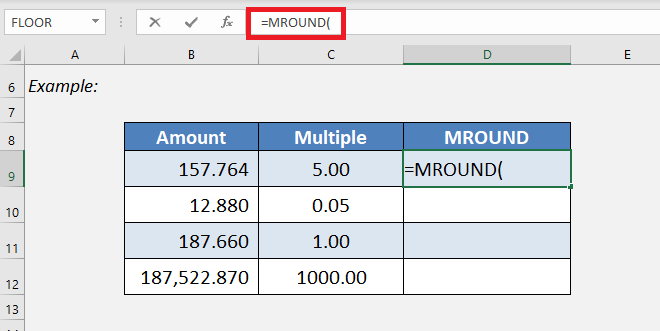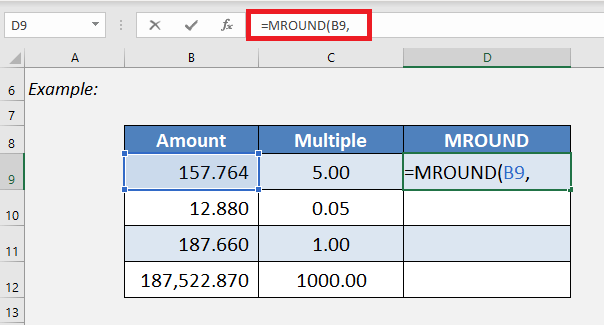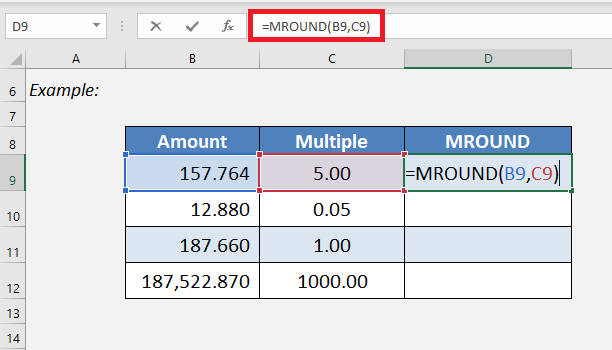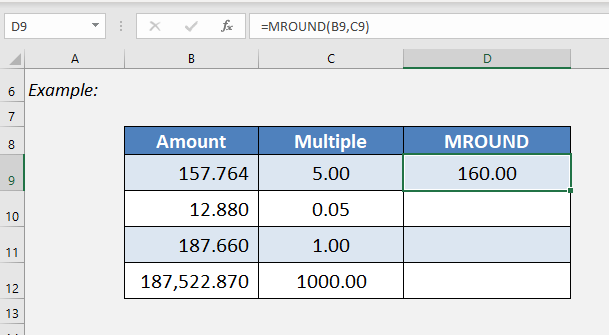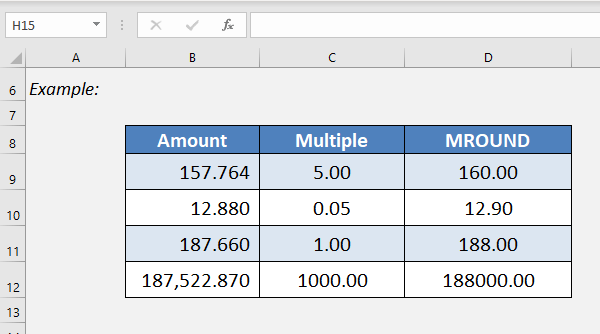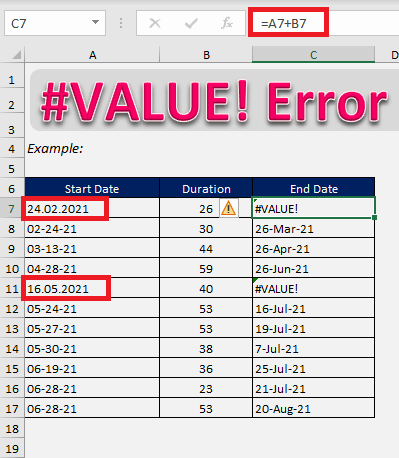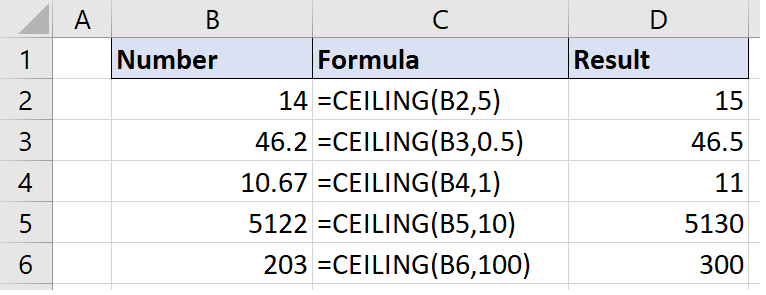Excel’s Round Off Formula (ROUND) can be used to remove decimal points from your data. Apart from making your data more presentable, it also makes the numbers easier to read and understand at first glance. Excel offers 4 different variations of the ROUND Formula. Let’s look at each of these in-depth with our Step By Step Examples & Free Practice Workbook.
Key Takeaways
- The ROUND function in Excel is utilized to eliminate decimal points from data, enhancing both the presentation and comprehensibility of numerical figures. Excel provides four variations of the ROUND formula to cater to different rounding requirements, allowing users to maintain the desired level of precision while displaying data in a more digestible format.
- When using the ROUNDDOWN formula, numbers are truncated to a specific number of decimal places as specified in the formula—for example, “=ROUNDDOWN(3.14159,3)” results in 3.141. This deliberate downward rounding can be essential when certain calculations or presentations require that numbers always round to the lower value instead of rounding to the nearest value.
- The ROUNDUP function serves the opposite purpose of ROUNDDOWN; it consistently rounds decimal values up to the next higher whole number or specified decimal place. For instance, if rounding to one decimal place, a value like 1.8930 will be rounded up to 1.9. This ensures values are either maintained or increased slightly, often used when conservative estimates are needed or for ensuring compliance with specific numerical thresholds.
Table of Contents
ROUND Function
What does it do?
Rounds a number to the nearest decimal based on your specified number of digits
Formula breakdown:
=ROUND(number, num_digits)
What it means:
=ROUND(the number, number of decimal places to round off)
Ever had the need to round off numbers?
I do it all the time in my financial calculations. For example, if I need to calculate percentage discounts and it gives me a number such as $47.4189349, rounding it off to $47.40 (round off to 1 decimal place) makes it so much more presentable!
In Excel, it’s very easy to do that with the ROUND formula!
Follow the step-by-step tutorial on Excel Round off Formula and download this Excel workbook to practice along:
STEP 1: We need to enter the ROUND function:
=ROUND(
STEP 2: The ROUND arguments:
number
What is the number we want to round off?
Reference the cell that contains the number:
=ROUND(B9,
num_digits
Round off to how many digits?
Reference the cell that contains the number of digits:
=ROUND(B9, C9)
STEP 3: Do the same for the rest of the cells by dragging the ROUND formula all the way down using the left mouse button.
Now you are able to Excel round off formula with a different number of places!
Note: A negative sign before the rounding digit indicates how many places to the left of the decimal point should the number be rounded.
ROUNDUP Function
ROUNDUP Function is used to round the number up to the number of decimal points written.
For the ROUND function, if the number is less than 5 it is rounded down but for ROUNDUP it will always round up the numbers.
For Example –
=ROUNDUP(104.1,0)
If you want to round up 104.1 to zero decimal places, ROUNDUP will provide the result as 105!
If the argument for the number of decimal points is
- Positive numbers – Excel will round to the right of the decimal point
- Negative numbers – Excel will round to the left of the decimal point
- Zero – Excel will round to the nearest 1.
We will show how to Excel round off formula using ROUNDUP below:
STEP 1: Enter the roundup formula
=ROUNDUP(
STEP 2: Select the cell whose amount needs to be rounded
=ROUNDUP(B9,
STEP 3: Select the cell that contains the digits up to which the number needs to be rounded.
=ROUNDUP(B9,C9)
The number of digits that the number needs to be rounded up to is entered here. It can be entered in a cell and the cell can be selected, or the digit can directly be written in the formula.
STEP 4: Copy-Paste the formula down to the remaining cells.
As the formula is entered, the result gives the amount rounded up to the given decimal points
ROUNDDOWN Function
Another variation is ROUNDDOWN that rounds down the number to the desired number of decimal places.
Here, the steps are the same except for selecting the ROUNDDOWN function instead of the ROUNDUP function.
For the amount 1584.66, the ROUNDUP formula provided the result as 1585 but ROUNDDOWN has provided the result as 1584!
MROUND Function
It rounds the number to the nearest multiple of a number given. It will round the number up or down depending on the nearest multiple provided in the formula.
For example, this function can be used to;
- Round a price to the nearest multiple of 3
- Round a price to the nearest 0.05
- Round a time to the nearest 30 minutes.
Let us take an example and Excel round off formula to the nearest multiple:
STEP 1: Enter the MROUND formula
=MROUND(
STEP 2: Enter the first argument i.e. the number that should be rounded.
=MROUND(B9,
STEP 3: Enter the second argument i.e. the multiple that the provided number should be rounded to.
=MROUND(B9,C9)
Excel will round the number 157.764 to the nearest multiple of 5 i.e. 160!
STEP 4: Copy-paste the formula below.
This completes our tutorial on how to round off numbers in Excel!
Common Pitfalls and Errors
Avoiding the #NUM! and #VALUE! Errors
If you’re an avid Excel user, you’ve probably encountered the #NUM! and #VALUE! errors, and they can be a bit of a headache. In the context of the ROUND function, these errors often stem from small missteps that are easily correctable.
The pesky #NUM! error shows up when the num_digits goes beyond what Excel can comprehend—that’s anything outside the range of -2^53 to 2^53. To steer clear of this error, ensure your num_digits falls within this realm. A quick fix could be to revise your formula or swap out the ROUND function for one that’s more fitting for your particular scenario.
Cue the #VALUE! error when one or both of your arguments aren’t numbers at all. It’s as if you’re trying to ask Excel to round off words rather than numbers—quite the task, right? So, go over your formula to confirm that all your inputs are indeed numeric. Sometimes, it just takes converting text to numbers or fixing cell references.
By keeping an eye out for these errors and understanding why they occur, you can maintain a smooth and error-free experience with Excel’s ROUND function.
When Not to Use ROUND: Caveats and Considerations
There are moments when reaching for the ROUND function in Excel might not be the best choice. Consider this your toolbox, and just like you wouldn’t use a hammer to screw in a lightbulb, ROUND isn’t always the right tool for the job.
For instance, if you’re preparing data for analysis and need to preserve the raw numbers, using ROUND too early in your data processing could introduce inaccuracies. Analysts often require exact figures for precise calculations, and rounding should only be applied when presenting the final data, if necessary.
Additionally, if you’re performing a series of calculations and intermediate accuracy is critical, hold off on rounding until the end. Each round of rounding can introduce minor changes, which might snowball into significant errors over time—think compound interest calculations in finance or precise measurements in engineering.
Furthermore, sometimes you’re dealing with data that inherently shouldn’t be rounded, such as ID numbers, postal codes, or other categorical numerical data. In these cases, any form of rounding could result in data that no longer represents the original information accurately.
Remember, ROUND is a fantastic feature for tidying up figures for reports or ensuring that numbers meet specific decimal or whole number constraints. Like any strong feature, use it with discretion for the best results.
Beyond the Basics
Other Rounding Functions in Excel to Explore
Diving deeper than the surface level ROUND function opens up a whole new world of possibilities in Excel. There’s a rich list of functions at your disposal, each with its quirks and features.
For starters, ROUNDUP and ROUNDDOWN bring simplicity to the table, they respect your wishes and always round numbers up or down, respectively, no matter what the next digit says.
Then there’s MROUND, the mediator of sorts, which finds the middle ground by rounding numbers to your specified multiple. This can be particularly useful when you’re dealing with standard units, such as rounding time to the nearest quarter-hour.
FLOOR and CEILING could be seen as the architects—both work with multiples, but FLOOR will always go down a level, whereas CEILING aims high.
INT is like rounding with a floor function set to infinity. It doesn’t care about the decimal digits—it only looks at whole numbers.
And if you wish to remove decimals without rounding, TRUNC is your go-to. It simply chops off the decimal part, no questions asked.
Venturing into the world of EVEN and ODD rounding can align figures for statistical or accounting practices to the nearest even or odd whole number, respectively.
These various rounding functions give you the flexibility to manipulate numerical data in Excel to fit nearly any requirement you might run into.
Utilizing MROUND, CEILING, and FLOOR for Special Cases
Special cases require special rounding functions, and in Excel, MROUND, CEILING, and FLOOR are your go-to tools when generic rounding just doesn’t cut it.
MROUND comes to the rescue when consistency is key, rounding a number to your chosen multiple. So, when you want to calculate items sold in packs, labor in standard hourly increments, or materials in predefined lengths or weights, MROUND will round your number either up or down to the nearest pack, hour, or unit that you specify.
Now imagine you’re working on a budget and need to allocate expenses to the nearest $100. CEILING has your back, always rounding up, ensuring you don’t fall short in your allocations. It’s also great when dealing with non-discrete quantities, like material lengths that can’t be purchased in fractions.
On the flip side, FLOOR is about being conservative, rounding down to not exceed a certain threshold. Use FLOOR to ensure quantities are within production capabilities or to adjust discounts to not overstep a predetermined limit.
These three functions keep you equipped for situations where precision rounding is just as important as the calculations themselves.
FAQs
Can You Round to the Nearest 0.5 in Excel?
Absolutely! To round a number to the nearest 0.5 in Excel, you have a trusty trio of functions at your service. The MROUND function is perfect for this task—=MROUND(A2, 0.5)—it rounds a number to the nearest multiple of 0.5. Alternatively, use FLOOR or CEILING functions (=FLOOR(A2, 0.5) or =CEILING(A2, 0.5)) to always round down or up to the nearest 0.5, respectively. These commands offer you the flexibility to approach half-unit rounding with precision.
How to Extract and Round Only the Decimal Part of a Number?
To extract and round only the decimal part of a number, you can create a crafty combination of Excel functions. Subtract the integer part from the number and then round: =ROUND(A1-INT(A1), n), where n is the number of decimal places you want. This essentially isolates and rounds the decimal part to the desired precision, letting you focus on the fractional portion.
How Can You Round a Number and Still Preserve the Original Value?
Preserving the original value of a number while rounding in Excel might seem challenging, but here’s a handy trick: use a separate cell to display the rounded number. By applying your round function—like =ROUND(A1, 2)—in a different cell, you display a rounded-off figure, while the cell containing the original value remains untouched. This way, you can showcase rounded figures for presentation or summary purposes while keeping the precise data intact for detailed analysis or record-keeping.
Conclusion
There are numerous ways to Round off formula in Excel and present the value in the best way possible. So whatever your requirements, Excel has a way.
Be sure to understand the difference and choose the right one to prevent unexpected results.

Bryan
Bryan Hong is an IT Software Developer for more than 10 years and has the following certifications: Microsoft Certified Professional Developer (MCPD): Web Developer, Microsoft Certified Technology Specialist (MCTS): Windows Applications, Microsoft Certified Systems Engineer (MCSE) and Microsoft Certified Systems Administrator (MCSA).
He is also an Amazon #1 bestselling author of 4 Microsoft Excel books and a teacher of Microsoft Excel & Office at the MyExecelOnline Academy Online Course.
